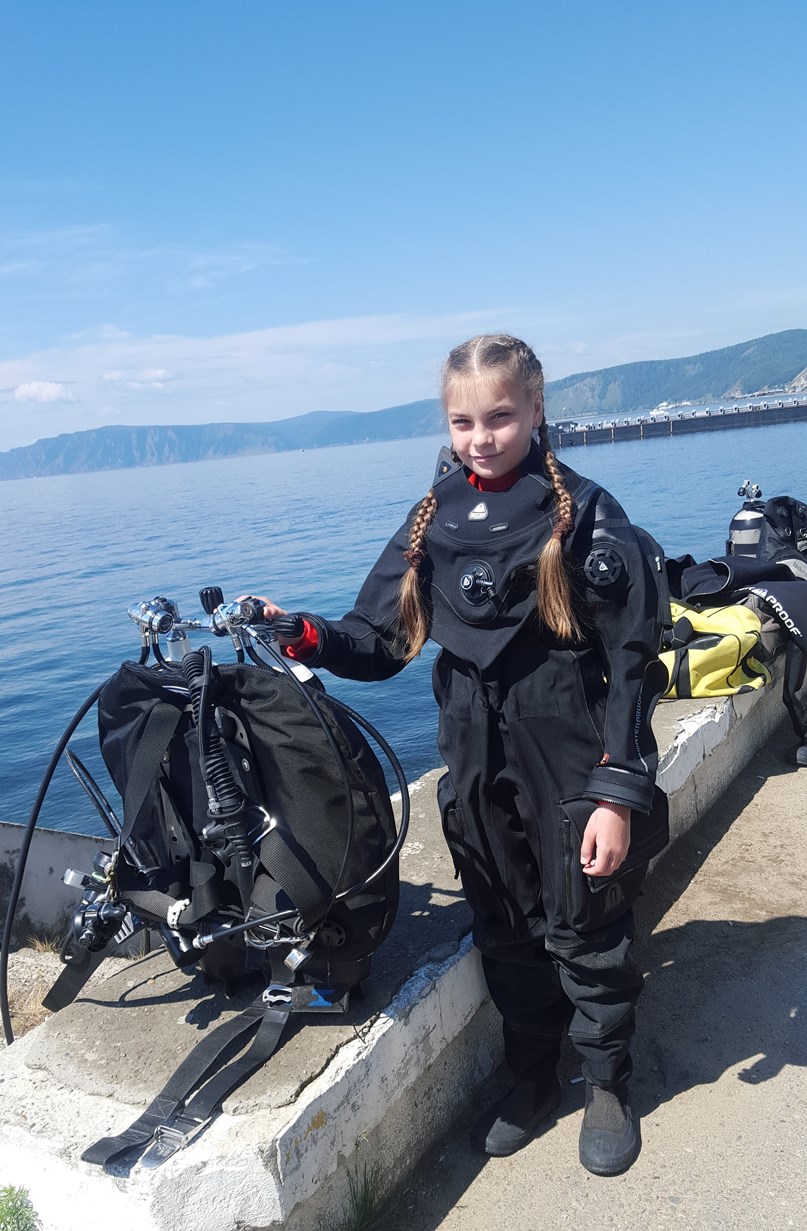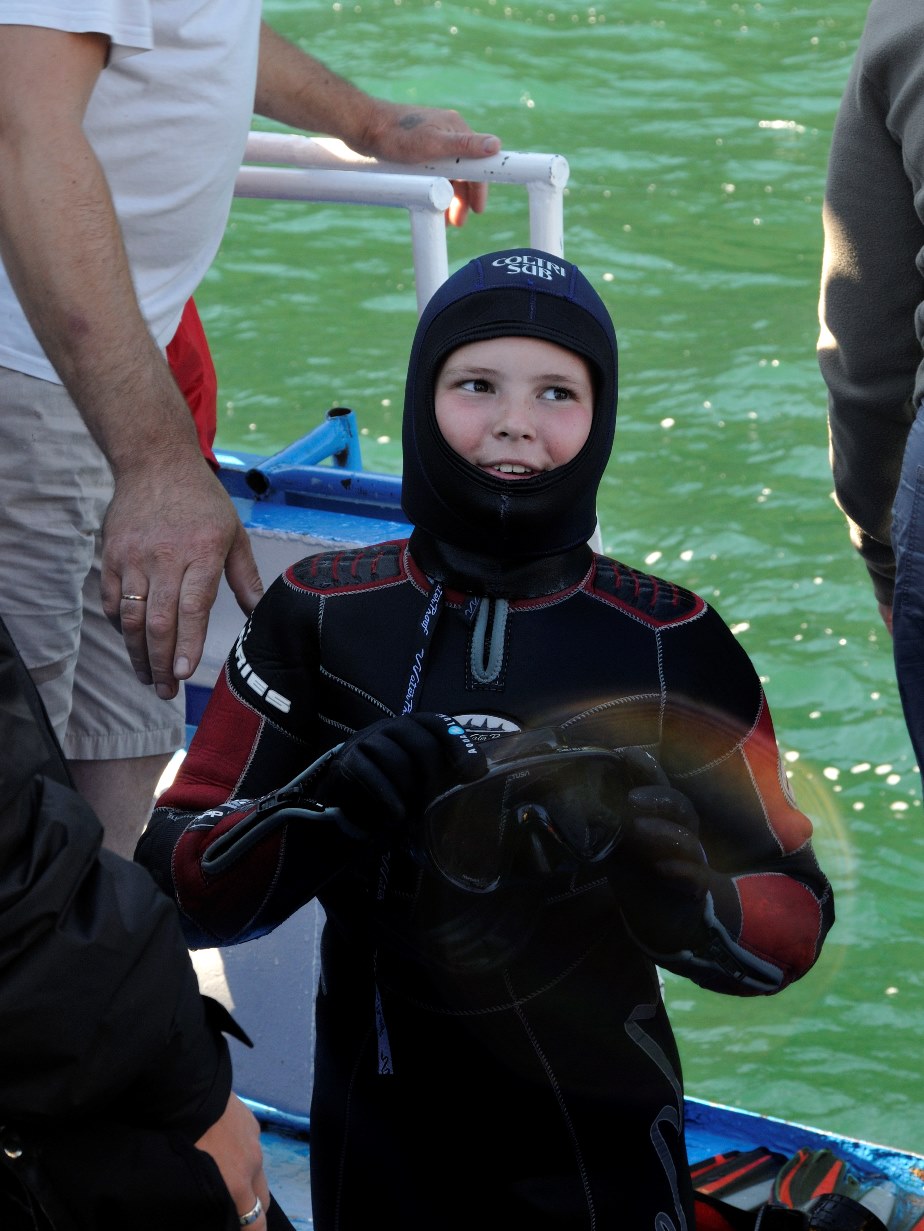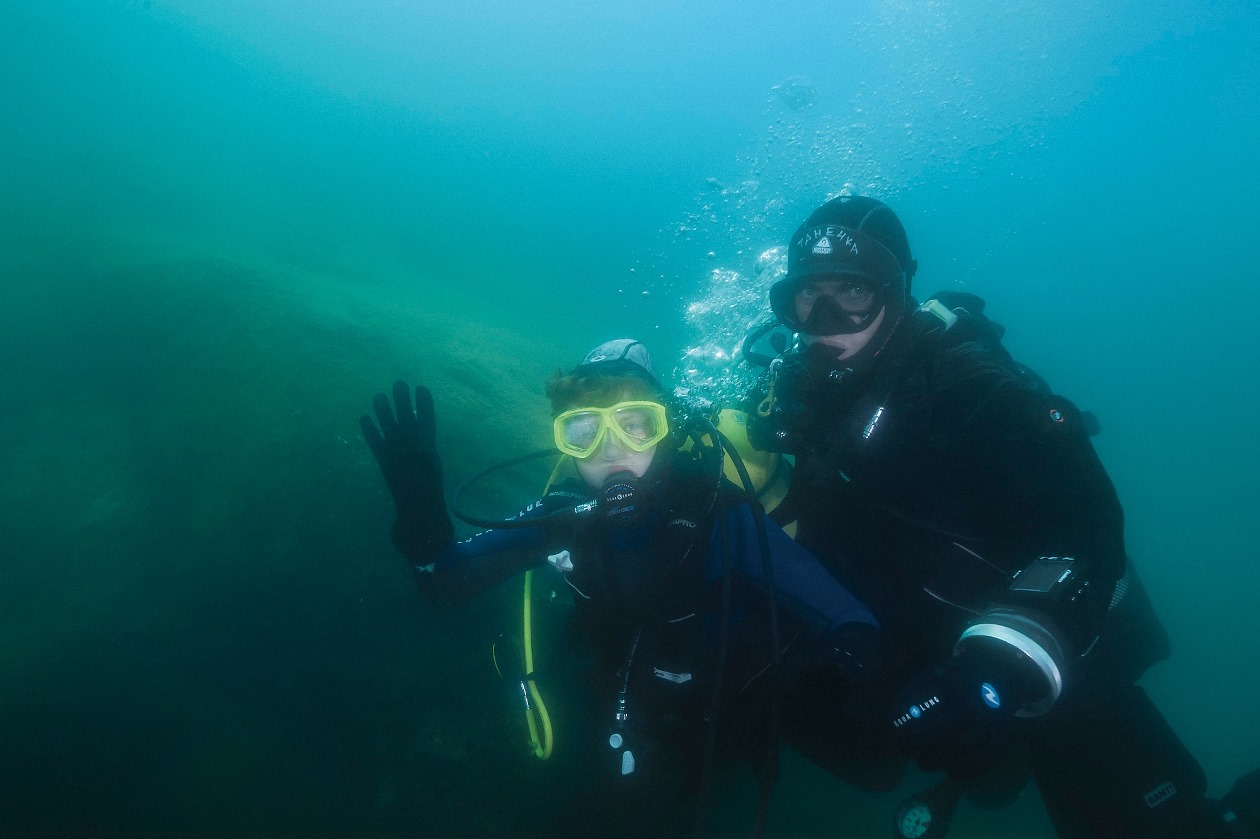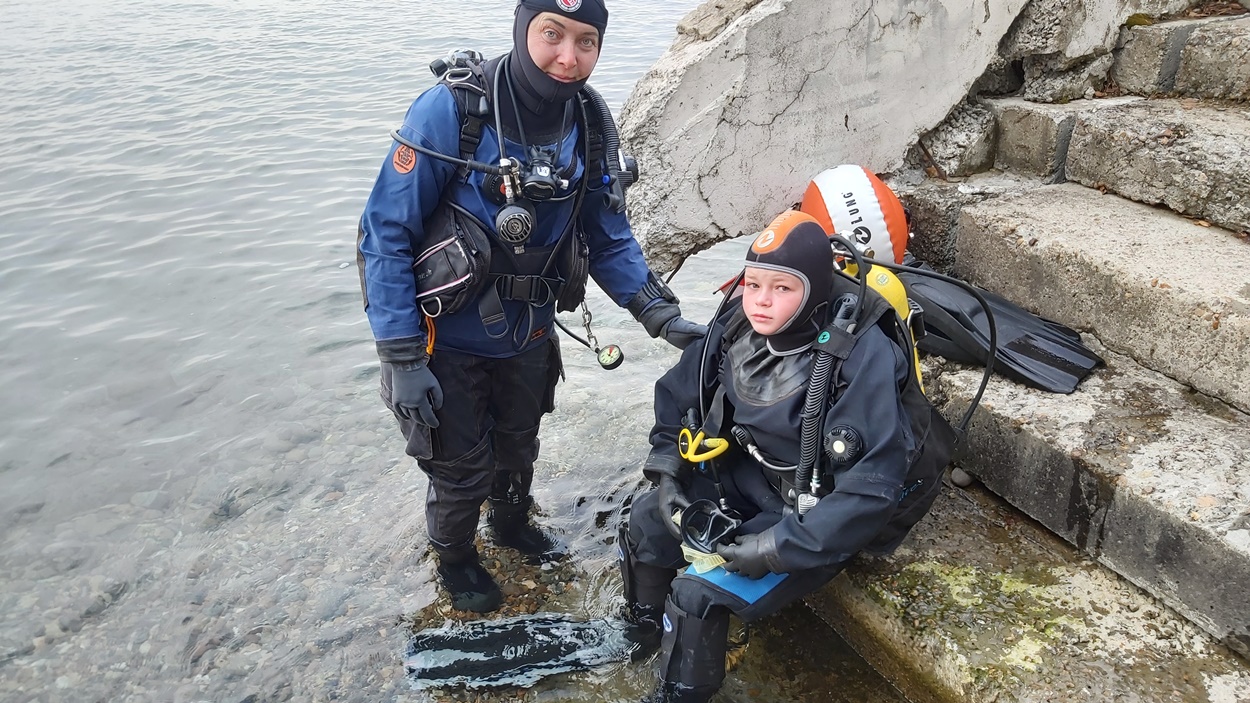BRONZE Dolphin (8-10)
The policy of the CMAS is to open the door of the underwater world to our children so that they open out there in full safety. The discovery of this world must contribute to the safeguarding of our environment. Children's diving is not integrated into the adults' programme. Its development and contents stand alone. CMAS suggest that the age limits should be between 8 and 14 years. Children over 14 should join the federal programme for adults.
BRONZE award.
Safety standards:
- Depth of 5 metres maximum
- Advised method of entry into the water is from the beach at the beginning of training
- The diving will be held on the bottom rather than in full water
Theoretical lessons
- The student must be able to use his equipment
- He must be able to identify all he saw: animal or vegetable, what swims and what doesn't, several fish and algae, dangerous plants and animals
- He must be able to discuss the dives: place (sea, lake....), temperature
- He knows the basic signals. He must understand and know when to use the following signals: Everything's O.K., I understood I'm in difficulty, I'm short of air, I'm cold, Look You, me, We go up We go down
Practical experience
Length: This endorsement can be gained either during a 1 week course in the sea or by joining a club in either a natural or artificial environment for 1 year.
The award is at the discretion of the instructor. All knowledge acquired in the artificial environment need to be adaptive to the natural environment. This adaptation must be run by an instructor.
Location: The dive site should have good visibility, be sheltered, with adequate means of entry to and exit from the water. It must also have the flora and fauna for the planned activity.
Objectives
- The pupil must be able to: dress and undress himself, rig and dismantle the diving tank, know the correct order to put on equipment
- The pupil must be capable to balance his ears: at the doctors (at the time of his medical visit), with the instructor, at the water edge, know how to pinch his nose with the mark in place, know how to exhale via the nose, with the mask and mouthpiece in place, know how to overcome the sensation of "pressure" of both ears.
- The pupil must be able to take out and replace his mouthpiece: open his mouth in the water, know how to hold his breath for a short period, stay calm, replace the mouthpiece on inhaling, replace the mouthpiece on exhaling using the demand valve.
- In the sea, the pupil must be able: to empty his mask of water, to enter the water from the shore, to move in all directions (propulsion), to maintain all the positions (lung ballast), to stay in contact with his instructor and the environment in which they are diving.
- The pupil must be able to return to the surface, that is: know how to swim vertically, know how to ascend, breathing normally with a regulator, know how to ascend, exhaling air, know how to ascend at the same time (same speed) as his instructor, know how to stay at the surface, know how to rejoin the boat
The cost of the course is 17000 rubles. The price includes: theory in the classroom, theoretical exam, confined water dives, rent of personal equipment, certification.




